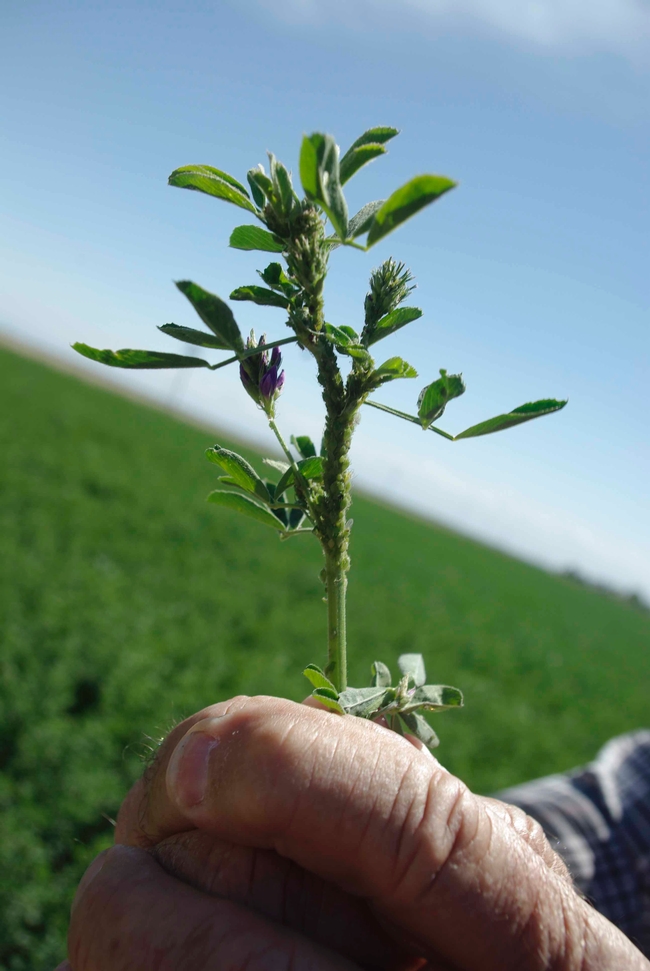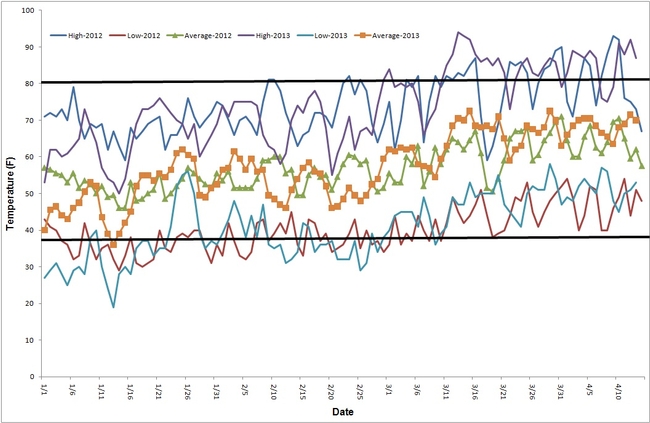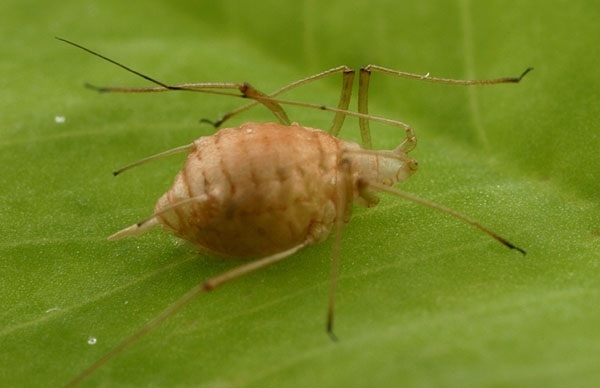
Cooler weather is ideal for pea and blue alfalfa aphid population growth. Distinguishing between the pea and blue alfalfa aphid is critical for proper treatment (see Godfrey’s blog here, //ucanr.edu/blogs/blogcore/postdetail.cfm?postnum=9639). This can be done with a hand lens and using the ‘aphids found in alfalfa’ key located here, http://ceriverside.ucanr.edu/newsletters/December_201034750.pdf. Both aphids are blue-greenish in color (the pea aphid has a “pinkish” biotype that is less common). The aphids are easily separated by looking at their antennae. The pea aphid has 3 to 4 narrow dark bands (annuli) along the antennae which are tan in color whereas the antennae of the blue alfalfa aphid are uniformly brown.
A significant IPM “tool” is that of host plant resistance which is bred into many alfalfa varieties. The most effective means of controlling pea and spotted alfalfa aphids is planting resistant varieties; CUF 101 is highly resistant (>50% resistant plants) to spotted, pea, and blue alfalfa aphids. UC Cibola is highly resistant to spotted alfalfa aphid, resistant (31-50% resistant plants) to pea aphid, and has a low resistance (6-14% resistant plants) to blue alfalfa aphid. The resistance differs by variety and this information is summarized here, http://www.alfalfa.org/pdf/2013%20NAFA%20Variety%20Leaflet.pdf.

It is not uncommon to see some build-up of blue alfalfa aphid and pea aphid in the spring before the temperatures warm. Alfalfa aphid infestations are not consistent from year to year with some fields heavily infested with aphid, well above threshold, and other fields have low numbers of aphids. The economic infestations of blue alfalfa aphid are higher this year than in recent years. Insecticide applications have been warranted in many fields this year, and in some cases additional products have been used to manage aphids (See Godfrey’s blog here, //ucanr.edu/blogs/blogcore/postdetail.cfm?postnum=9639). An alternative to applying chemical insecticides is early harvest of the field as long as yield is not significantly compromised. Do not treat alfalfa with insecticides until the economic treatment level for a specific pest has been reached and the predator and parasite populations have been assessed for their potential role in controlling the pest. Use of broad spectrum insecticides like pyrethroids should be avoided as their use can actually exacerbate the aphid problem by removing many critical natural enemies that manage aphids (predator-prey population dynamics).


Currently there is a working group (Pete Goodell, Larry Godfrey, Eric Natwick and Vonny Barlow) that are gathering information to address the blue alfalfa aphid issue across the state (see Goodell’s blog here, //ucanr.edu/blogs/blogcore/postdetail.cfm?postnum=9786). We are putting together a “road show” that will be presenting a synopsis of the blue alfalfa aphid issue to date. Look for it in your area soon.